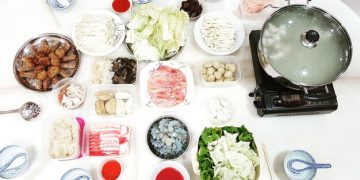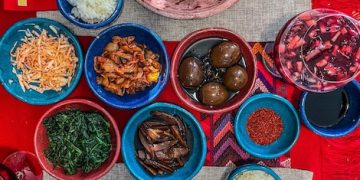The Art of Kimchi Making: A Beginner’s Guide for US Home Cooks
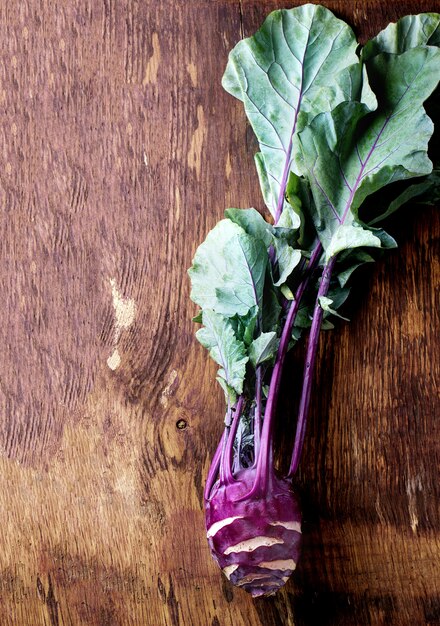
The Art of Kimchi Making: A Step-by-Step Guide for US Home Cooks offers a comprehensive introduction to crafting authentic kimchi at home, tailored to American kitchens and tastes, ensuring a flavorful and rewarding culinary experience.
Dive into the vibrant world of Korean cuisine with our step-by-step guide on the art of kimchi making: a step-by-step guide for US home cooks. Discover the secrets to creating this iconic fermented dish in your very own kitchen.
Getting Started: Understanding Kimchi
Kimchi, a staple in Korean cuisine, is more than just a side dish; it’s a cultural icon. Its origins trace back centuries, evolving from simple pickled vegetables to the complex, flavorful condiment we know today. For US home cooks, mastering kimchi making opens a door to a world of tastes and textures.
This guide aims to demystify the kimchi-making process, offering clear steps and helpful tips for achieving authentic results.
The Health Benefits of Kimchi
Beyond its delicious taste, kimchi is renowned for its health benefits. The fermentation process creates probiotics, beneficial bacteria that support gut health and boost the immune system.
- Probiotics: Enhances gut flora, aiding digestion and nutrient absorption.
- Vitamins and Minerals: Rich in vitamins A, B, and C, as well as minerals like calcium and iron.
- Antioxidants: Contains compounds that combat free radicals and reduce the risk of chronic diseases.
Kimchi is a nutritional powerhouse, making it a healthy and flavorful addition to any diet.
In conclusion, understanding the history and health benefits of kimchi adds depth to the culinary experience. It’s a versatile and nutritious dish that deserves a place on every table.
Essential Ingredients for Kimchi
Creating authentic kimchi starts with sourcing the right ingredients. While some may be available at your local grocery store, others might require a trip to an Asian market. The key is to ensure freshness and quality for the best flavor.
Let’s explore the essential components of kimchi, offering guidance on selection and preparation.
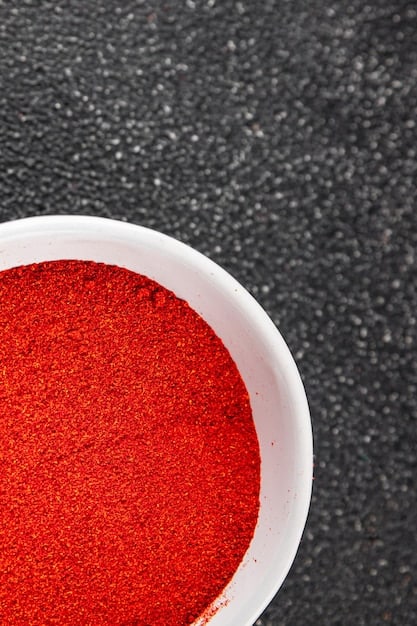
Key Vegetables: Napa Cabbage and Korean Radish
Napa cabbage and Korean radish are the foundational vegetables for most kimchi varieties. Choose firm, heavy cabbages with tightly packed leaves. Korean radishes, also known as mu, should be dense and crisp.
Proper preparation is crucial; napa cabbage is typically salted and left to wilt, while Korean radish is julienned or sliced into matchsticks.
Flavor Enhancers: Gochugaru, Garlic, Ginger, and Fish Sauce
Gochugaru, Korean chili flakes, provide the signature spicy kick and vibrant red color of kimchi. Fresh garlic and ginger add aromatic depth, while fish sauce or salted shrimp contribute umami and complexity.
- Gochugaru: Select coarse flakes for the best flavor and texture.
- Garlic and Ginger: Use fresh cloves and rhizomes for the most potent aromatics.
- Fish Sauce: Choose a high-quality brand for optimal flavor.
Combining these flavor enhancers in the right proportions is essential for a well-balanced and delicious kimchi.
In essence, sourcing high-quality ingredients is the first step to successful kimchi making. By paying attention to freshness and flavor, you set the stage for a truly authentic and satisfying culinary experience.
Step-by-Step: The Kimchi-Making Process
Now that you have gathered your ingredients, it’s time to dive into the kimchi-making process. This step-by-step guide breaks down the process into manageable steps, ensuring success even for beginners.
Follow along closely, and you’ll be enjoying homemade kimchi in no time.
Salting the Napa Cabbage
The first step is to salt the napa cabbage, a crucial process that draws out excess moisture and tenderizes the leaves. This ensures that the cabbage absorbs the flavors of the kimchi paste.
Cut the napa cabbage lengthwise into quarters, then rub salt between each leaf. Allow it to sit for 1-2 hours, flipping occasionally, until the cabbage is wilted and pliable.
Making the Kimchi Paste
While the cabbage is salting, prepare the kimchi paste. In a large bowl, combine gochugaru, minced garlic, grated ginger, fish sauce, sugar, and any other desired seasonings.
- Consistency: The paste should be thick but spreadable.
- Flavor: Adjust the amount of gochugaru to your desired spice level.
- Optional Ingredients: Add pureed fruit, such as apple or pear, for a touch of sweetness.
Mix well and set aside until the cabbage is ready.
In summary, salting the cabbage and preparing the kimchi paste are foundational steps in the kimchi-making process. By following these steps carefully, you set the stage for a flavorful and well-textured kimchi.
Tips and Tricks for Perfect Kimchi
While the basic kimchi-making process is straightforward, mastering the art requires attention to detail and a few helpful tricks. These tips will help elevate your kimchi to the next level.
From adjusting spice levels to optimizing fermentation, these insights will guide you towards kimchi perfection.
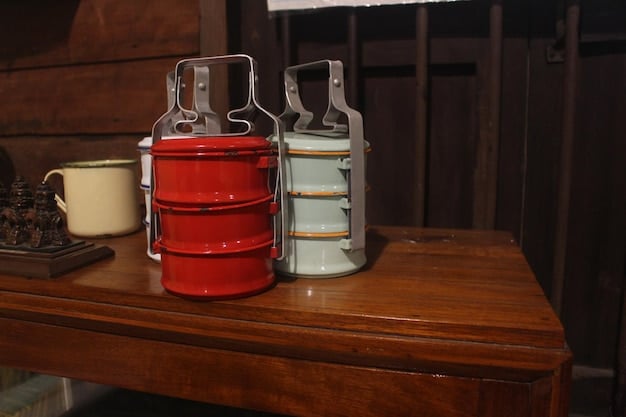
Adjusting Spice Levels
The amount of gochugaru you use determines the spice level of your kimchi. Start with a smaller amount and taste as you go, adding more until you reach your desired heat.
For a milder kimchi, consider using less gochugaru or combining it with milder chili flakes.
Optimizing Fermentation
Fermentation is the heart of kimchi making. The ideal fermentation temperature is between 60-70°F (15-21°C). Store your kimchi in a cool, dark place, away from direct sunlight.
- Signs of Fermentation: Bubbles, a slightly sour smell, and a tangy taste.
- Storage: Once fermented to your liking, store the kimchi in the refrigerator to slow down the process.
- Burping: If using airtight containers, burp the kimchi daily to release excess gases.
By carefully monitoring and controlling the fermentation process, you can achieve the perfect balance of flavors and textures.
In conclusion, adjusting spice levels and optimizing fermentation are key to creating kimchi that suits your taste preferences. With these tips, you can confidently experiment and refine your kimchi-making skills.
Kimchi Variations: Beyond the Basics
Once you’ve mastered the basic kimchi recipe, the possibilities are endless. From different vegetables to unique flavor combinations, there’s a world of kimchi variations to explore.
Branching out from the traditional recipe allows you to customize kimchi to your liking.
Cucumber Kimchi (Oi Sobagi)
Cucumber kimchi, or oi sobagi, is a refreshing and crunchy variation that’s perfect for summer. Small cucumbers are stuffed with a spicy kimchi filling.
This kimchi is typically enjoyed fresh or after a short fermentation period.
Radish kimchi, or kkakdugi, is another popular variation. Diced Korean radish is seasoned with gochugaru, garlic, ginger, and fish sauce.
Kkakdugi is known for its crisp texture and bold flavor.
In summary, exploring kimchi variations opens up a world of flavors and textures. From cucumber to radish, each variation offers a unique culinary experience.
Serving and Storing Your Homemade Kimchi
Now that you’ve made your own kimchi, it’s time to enjoy the fruits of your labor. Proper serving and storage are essential for preserving the flavor and quality of your kimchi.
Whether you’re serving it as a side dish or incorporating it into your favorite recipes, these tips will help you make the most of your homemade kimchi.
Serving Suggestions
Kimchi is incredibly versatile and can be enjoyed in countless ways. Serve it as a side dish to rice, noodles, or grilled meats. Use it as a topping for tacos, sandwiches, or pizza.
- Kimchi Fried Rice: A classic Korean dish made with kimchi, rice, and various vegetables and proteins.
- Kimchi Stew (Kimchi Jjigae): A hearty and flavorful stew made with kimchi, tofu, pork, and vegetables.
- Kimchi Pancakes (Kimchi Jeon): Savory pancakes made with kimchi, flour, and various vegetables.
Kimchi can be a flavorful and nutritious addition to almost any meal.
Fermented kimchi can be stored in the refrigerator for months. The flavor will continue to develop over time, becoming more sour and intense.
In conclusion, proper serving and storage are key to enjoying your homemade kimchi to the fullest. With these tips, you can preserve the flavor and quality of your kimchi for weeks or even months.
| Key Point | Brief Description |
|---|---|
| 🥬 Salting Cabbage | Draws out moisture, tenderizes leaves for better flavor absorption. |
| 🌶️ Kimchi Paste | Blend of gochugaru, garlic, ginger, and fish sauce for kimchi’s distinctive taste. |
| 🌡️ Fermentation | Store at 60-70°F for proper fermentation, monitor for sour smell and bubbles. |
| 😋 Serving | Enjoy as a side, in fried rice, stews, or pancakes for versatile flavors. |
Frequently Asked Questions
▼
Napa cabbage is the best and most traditional choice for kimchi. Its slightly sweet flavor and crisp texture make it ideal for fermentation. Look for heads that are firm and heavy for their size.
▼
Yes, you can easily adapt kimchi recipes to be vegetarian or vegan! Simply substitute fish sauce or salted shrimp with vegetable broth or a vegan fish sauce alternative. The flavor will still be delicious!
▼
Kimchi can last for months in the refrigerator. It’s generally safe to eat as long as there’s no mold. Expect a more intense sour flavor as it ages—this is normal! Discard if it develops a foul odor.
▼
If your kimchi is too spicy, try adding a touch of sugar or pureed fruit, like apple or pear. You can also serve it with cooling foods like rice or yogurt to balance the heat.
▼
To minimize the odor, store your kimchi in airtight containers. Glass jars with rubber seals work well. You can also place an open box of baking soda in your refrigerator to help absorb odors.
Conclusion
With this guide, you’re now equipped to embark on your own kimchi-making adventure. From selecting the freshest ingredients to mastering the fermentation process, each step contributes to a delicious and authentic result. Embrace the art of kimchi making and enjoy the vibrant flavors of Korea in your home.


